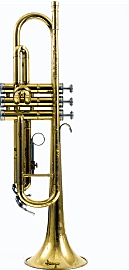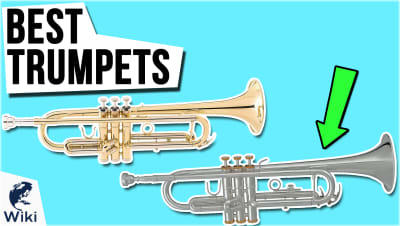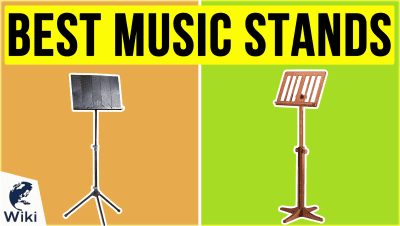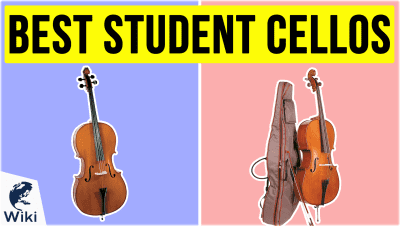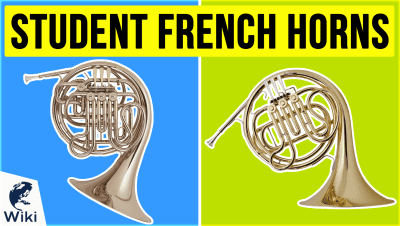The 10 Best Student Trumpets

This wiki has been updated 37 times since it was first published in June of 2016. One of the most popular instruments for beginners, the sound of a well-played trumpet makes a refreshing addition to nearly any musical genre. If there's a budding Herb Alpert or Chris Botti in your family, they can begin their musical career with one of these quality models that will help them develop proper techniques. Students will find these selections affordable, durable, and easy to play. When users buy our independently chosen editorial recommendations, we may earn commissions to help fund the Wiki.
Editor's Notes
November 29, 2019:
While you can drop thousands of dollars on a professional trumpet, you can actually get a reasonable starter horn without spending a fortune. In contrast to what band directors often deride as "trumpet-shaped objects," the LJ Hutchen 4218, Jean Paul TR-330, and Etude ETR-100 are actually perfectly functional instruments that are suitable for beginners. The Holton T602, Prelude TR711, and Jean Paul TR-430 are each an improvement over those most inexpensive models, and they should be a bit more free-blowing and a tiny bit better at high volumes and int he upper register. For mid-range student trumpets, though, the Conn 27B has an excellent pedigree and should last novices for quite a while before they get the urge to upgrade.
If you're a more discerning student, or one who knows they're serious about the craft, it's worth considering a more expensive model -- one that some might consider an "intermediate trumpet," although the instruments really exist on more of a spectrum from "student" to "professional" rather than in three disparate tiers. In that case, take a good look at the Bach TR300H2 -- although some feel it's slightly overpriced -- and the Jupiter JTR700, which is a relatively recently released model. All that said, if you're willing to spend twice as much as you would on the most basic, entry-level horn, it's hard to do better than the Yamaha YTR-2330, which is good enough to accompany most performers into the collegiate range and even beyond. And while you're at it, no student's arsenal is complete without a good music stand.
Special Honors
Trumpet Herald Marketplace As you might imagine, buying used can save you quite a bit of money on a good trumpet. The Trumpet Herald marketplace is a great place to start looking, and although there's always a question of the condition of used instruments, there's so much to choose from there that you'll almost certainly find the one that's right for you. trumpetherald.com
A Brief History Of The Trumpet
For this reason, the keyed trumpet didn't enjoy much success.
The trumpet is an extremely old instrument, with evidence of metal versions dating back to at least 1500 B.C.E. Horns made from natural materials, such as conch shells and animal horns most likely predate metal versions by thousands of years. These earlier horns can also be thought of as a type of trumpet. Examples of ancient metal trumpets have been found in Egypt, Scandinavia, South America, Asia, and China. It seems apparent that the trumpet wasn't used by a single culture or people' nearly every culture developed some form of the trumpet at some point in their history.
The earliest use of the trumpet wasn't for recreational music. In olden times, they were typically used for signaling, religious, and military purposes. For example, the Shofar, which is made from a ram's horn, and the Hatzotzeroth, which was traditionally made of silver, are both mentioned in the bible. They are said to have been used to blow down the walls of Jericho. In medieval times, trumpeters were essential for relaying military messages across battlefields.
Advancements in metal making and instrument design during the Middle Ages and the Renaissance era made trumpets more suitable for music making, though they still weren't capable of a large variety of sounds and tones. This is because early trumpets didn't have pitch-altering devices or valves. Instead, the pitch was controlled by the player varying their embouchure. The limited versatility of the trumpet compared with other instruments of the time led to its popularity fading during the Classical and Romantic eras
In the 1800s, the keyed trumpet was introduced. It had holes in the wall of the tube that trumpeter could plug and unplug, making it capable of chromatic expression. Unfortunately, while the holes did allow for more diverse playing, they also seemed to detract from the overall tone of the instrument. For this reason, the keyed trumpet didn't enjoy much success. It wasn't until the valved trumpet was invented that this now-beloved instrument began to see some measure of popularity. Since the introduction of the valved trumpet, it has become a core component of orchestras, bands, and many genres of music.
Tips For Choosing The Right Student Trumpet
Picking a student trumpet can be difficult. The average person buying one is either a parent who may not actually play the instrument themselves, or an adult who is planning to learn how to play the instrument. Either way, this means they generally won't be very knowledgeable about the trumpet. To make things easier, we have compiled some simple information that can help you make the best choice.
The mouthpipe is the tubing that connects the mouthpiece to the tuning slide.
The first thing you should consider is the bore size. The bore is the opening that the air uses to travel through a trumpet. The larger the bore, the harder the musician's lungs need to work to produce a full sound. Adult beginners should choose an instrument with a medium size bore between between .458" and .460". This is large enough to produce a nice, rich sound, while not being so large as to be difficult to play. Younger beginners are often better of with a smaller bore size.
The next thing to consider is the mouthpipe and bell materials. The mouthpipe is the tubing that connects the mouthpiece to the tuning slide. A mouthpipe will generally be made from one of three materials: sterling silver, red brass, or yellow brass. For beginner trumpeters, a red brass mouthpiece is often the best option. It is highly corrosion-resistant and doesn't require frequent cleaning. As with mouthpipes, bells are usually made from one of three materials: yellow brass, rose brass, and silver. Yellow brass is the material most student trumpet bells are made from, but if you find one with rose brass, it is a good choice as it helps the instrument create a warmer tone.
Last, you'll want to consider the valve pistons. A good student trumpet should have nickel-plated pistons. These are very durable and can deal with infrequent cleanings better than monal valve pistons.
How Learning To Play Music Can Benefit The Brain
A number of studies have shown that playing a musical instrument can have a profound effect on the brain. Children who learn to play musical instruments at a young age will reap the benefits throughout their entire adult lives. It only takes 15 months of practice during early childhood to produce numerous structural changes in the brain and how it works. This is due to the fact that playing an instrument stimulates multiple components of the central and peripheral nervous systems. When playing an instrument, the musician's brain and body must interpret audio, visual, and sensory information simultaneously. This leads to superior multi-sensory skills, which can be extremely helpful in every day situations, such as driving, navigating crowded areas, or playing sports.
Their brains will be able to more effectively create, store, and retrieve memories.
Improved sensory skills can also enable people to hear and process sounds that they otherwise couldn't. Have you ever known a musician who could hear specific notes or nuances in music that were imperceptible to you? This is a result of their brains learning to process noises at a higher level than the average person.
It isn't just the sensory areas of the brain that are enhanced though playing music. Learning and memory skills can also improve. When learning to play music, massive structural and functional changes occur in the hippocampus. This is the part of the brain that is believed to be the center of emotion and memory. In people that suffer from dementia or Alzheimer's disease, the hippocampus is the first area of the brain to show noticeable damage. Playing music has been shown to stimulate neurogenesis, which is the formation of new neurons. Not only can this reduce the possibility of suffering from memory-related brain disorders later in life, it can improve a person's ability to learn and remember new things. Their brains will be able to more effectively create, store, and retrieve memories.









